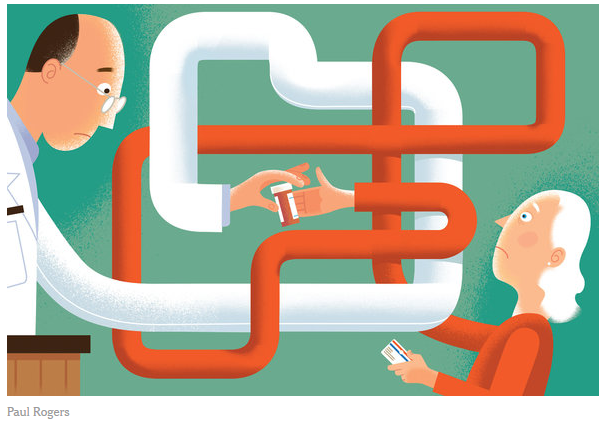
Most Americans ask the question, is the price I pay for prescription medications FAIR? In other words, what is the true cost of developing, making and selling a medicine, AND how much profit seems reasonable? This is what we tackled last week during our Community Conversation with experts from the U of Washington’s International Society for Pharmacoeconomics and Outcomes Research (ISPOR).
KEY FACTS THAT INFORMED OUR DISCUSSION
Tufts estimates that it costs $2.6 billion to develop an FDA approved drug, a number that increases 9% per year. People in the US pay more for drugs than people in other countries for a few reasons: 1) we use more medications because we have better access to new ones, 2) we have a higher burden of chronic disease like diabetes and obesity, and 3) in the US, the government protects drug manufacturing monopolies and limits price negotiations while other countries have more price regulation.
Another reason people in the US (and in Canada and Europe) pay more for medications is simply because, on the whole, we can afford to. Picture a world map, and picture all the people who live on Earth. At 326 million, the US population is 4.4% of the world’s 7.5 billion people, but the US accounts for 50% of all medication sales in the world. Mind blown.
We are looking for VALUE in our medications. We want medications that are novel and offer leaps of improved quality of life. We are willing to pay more for medications that achieve this high bar, but there is a point for every person where price will exceed our ability to purchase a medication.
Finally, we learned about the trade-off between innovation and access. Monopoly protection funds innovation. In turn, industry creates more new drugs in the long run that cost more money in the short run and poorer access. “But if new medicines aren’t invented, then no one can access them in the long term.” (ISPOR) How can the market incentivize innovation if not through the almighty dollar?
DISCUSSION THEMES
Many in the room were for the first time faced with the reality that the US foots HALF the bill of medications in the world. I don’t think anyone, besides the facilitators, was prepared for this data. As the discussion dug deeper, we realized that our drug costs fund innovation of new medications and devices. Despite the relationship between US drug prices and world drug innovation, many participants still did not think it FAIR that people in the US pay more than those in other countries.
Some held high the banner of altruism and seemed happy having the US play this role. Others felt perhaps that even within the US that medication prices should be on a sliding scale based on what a household could afford. Some shared personal stories about themselves or people they know who have had to choose between paying for their medications and paying other bills.
Yet others remained firm that prices could drop while maintaining innovation if pharmaceutical companies could lower their profits to reasonable margins. Some attendees implied that companies could reduce their expenses by accelerating the clinical research process, a point that was strongly opposed by a former industry employee. Pharmaceutical companies have no interest in accelerating clinical research in this manner because it would cause less confidence in drug safety.
As we were wrapping up our Conversation, we faced the question of whether or not the way we finance medications is sustainable. Our vocal attendees had faith in the free market to correct anything that was broken. Others remarked that the balance of medications on and off patent would also help with price competition once medications go off patent.
Our ISPOR facilitators emphasized that drug pricing is a complex ecosystem. They recommended that consumers, scientists, policy-makers and health care providers and administrators continue to learn and share their perspectives, in venues such as Community Conversations, as much as possible in order to find a stable and sustainable relationship between medication access and innovation.
To read some excellent resources on the topic, visit the Community Conversation archive and scroll until you find the “war on drug prices” topic.
~JenWroblewski
 If you are a parent you already know the guts, fortitude, desire and village it takes to raise a child from milestone to milestone to adulthood. Imagine your child is born with a fatal genetic disease affecting the function of all his skeletal muscles. Meet Alison and Paul Frase, their daughter Isabella, and finally their son Joshua who was born with myotubular myopathy. If you remember anything about their story, I want you to remember the power of passionate parents working with brilliant, dedicated scientists who tenaciously act and hope for a cure through biomedical research.
If you are a parent you already know the guts, fortitude, desire and village it takes to raise a child from milestone to milestone to adulthood. Imagine your child is born with a fatal genetic disease affecting the function of all his skeletal muscles. Meet Alison and Paul Frase, their daughter Isabella, and finally their son Joshua who was born with myotubular myopathy. If you remember anything about their story, I want you to remember the power of passionate parents working with brilliant, dedicated scientists who tenaciously act and hope for a cure through biomedical research.